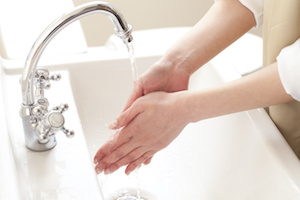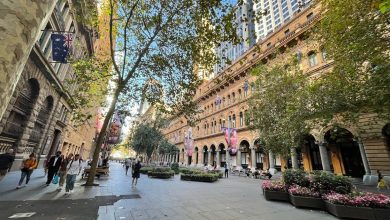
Hygiene, health and happiness: boost guest satisfaction
Public washrooms are the underestimated, under-appreciated face of your accommodation property. More often than not the first and last facility guests will use, they can make or break a guest review.
Hygiene is the most important element but there are other factors that should be taken into consideration, including technology, green products and odour control.
Maintaining a hygienic washroom sounds easy enough with the range of cleaning products and services available today. However, things can quickly go awry. The majority of complaints made about a property involve poor standards of hygiene and consistency is the key to avoiding these complaints.
Regular cleaning throughout the day is essential for any public washroom to replace toilet paper, replenish soaps and make sure there have been no mishaps.
A high quality, well-designed facility can also give your property the edge over competitors, particularly if you have invested in green materials or impressive technologies. Hands-free technology is the cornerstone of a five-star public washroom. The latest products to incorporate this technology include toilets, taps, hand dryers, soap dispensers and doors. Not only are they more convenient to use, they are infinitely more hygienic and far easier to clean.
Hand dryers are one way for you to be more environmentally friendly by eliminating the need for paper towels. This will also reduce queuing as dryers can now dry hands in less than five seconds.
Older hand dryers attempt to evaporate the water on wet hands and are generally lukewarm, ineffective and bacteria-riddled. High-speed and hands-free options have become the industry preference and for a good reason – they are effective.
The air used is filtered to remove 99.9 per cent of airborne bacteria and the machines are regulated by NSF International to make sure health and sanitation requirements are maintained.
There are a range of toilet hygiene products available for public washrooms. From disposable toilet seat protectors, to antibacterial seat sprays, wipes and cleaners; you can install dispensers in each cubicle to encourage good hygiene. These sanitisers also help protect the plumbing from lime scale and long-term wear.
Taking a harder look at your toilets’ flushing mechanism is also worthwhile in terms of hygiene and environmental health. High pressure flushes might be more hygienic but water wastage is a huge concern particularly for more rural properties relying on tank water so this is something to consider.
State-of-the-art sanitary bins and units also have automatic vapour sprays installed that disinfect and help eliminate bad odours. This type of technology goes a long way towards upgrading your facility. Silent air fresheners with motion-sensitive systems are energy efficient as well as beneficial to guests.
These should all be researched prior to installation to ensure their effectiveness as many are just temporary solutions. Proper air ventilation is also crucial; if your facility has no windows, an extractor fan might be what you need.
Though often neglected, door handles harbour the same germs as taps and toilet flushers so it is vital to consider them as part of your facility. It makes no sense to have hands-free taps, soap dispensers and toilets, but regular door handles as this will negate the germ-free ideal. Automatic doors, swing doors, motion sensitive locks, are all valid options for public rest-rooms.
Door signage is also something to consider. Etiquette reminders are a simple yet effective way to foster a hygienic space. Reminding visitors not to throw paper towels on the floor, to turn off taps, wipe down seats with sanitiser after use, etc, are all ways to improve washroom cleanliness and make life easier for cleaning staff.
Another element of public restrooms that is often overlooked, is baby-changing facilities. Particularly in men’s toilets these are often absent but if your property caters to families they are a vital inclusion.
Parents are far more likely to revisit accommodation where they feel welcomed and installing basic baby-changing solutions is a simple way to show a higher level of care and boost your service. Hygienic nappy bins, changing tables and even vending machines that offer infant-related essentials would make impressive additions to any public washroom.
There are also various staff considerations to put in place when maintaining a hygienic public washroom. The idea behind these is to minimise health risk and uphold a consistently good standard of service.
Any member of staff working in the hospitality industry should adhere to the following basic guidelines:
1. Clean clothing or uniform – workers should change into/out of a uniform at the beginning and end of their shift where relevant.
2. Hair should be kept clean and secured.
3. Jewellery should be kept to a minimum.
4. Wounds should be covered with a waterproof dressing.
5. Hand contact should be kept to a minimum.
6. Disposable gloves and/or utensils should be used for food handling.
7. All workers should follow a daily hygiene regime, maintaining good personal hygiene.
Thorough hand washing procedures should also be maintained.
Guests will continue to be impressed by a hygienic, well-thought out public washroom facility. Baby-changing amenities, hands-free technology, consistent cleaning maintenance, effective ventilation and air-freshening are all ways for an accommodation provider to show guests they care about the quality of service they provide.
Most bad reviews will cite poor hygiene and disappointing washroom or bathroom amenities are a common complaint of unsatisfied guests. So investing in a solid restroom space for your property is a good way to combat negative reviews and encourage repeat visits.

AccomNews is not affiliated with any government agency, body or political party. We are an independently owned, family-operated magazine.







